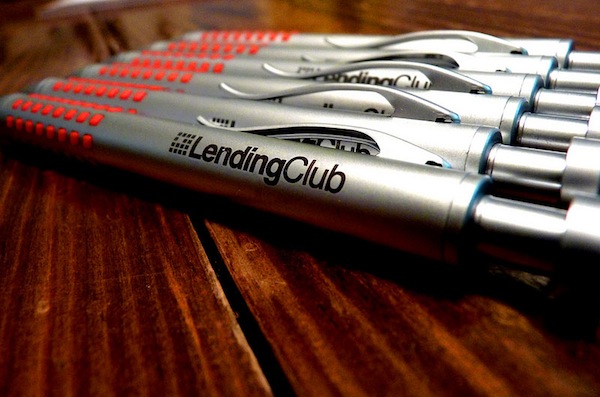How much damage did disruptive financial services companies cause your credit union last year?
While CUNA Mutual Group Chief Economist Steve Rick did not quantify how much disruptive financial services startups hurt individual credit unions in 2014, he told an October online conference audience they had certainly harmed credit unions overall.
Rick presented his research and perspectives on economic disruption and credit unions to CUNA Mutual Group's online Discovery Conference Oct. 21, 2015.
Rick pointed to credit unions' falling membership numbers over the last five years as prima facie evidence of disruption. According to the NCUA's 5300 data, credit unions with assets of up to $5 billion saw member numbers decrease between 2011 and 2014, Rick said.
“Now, you would maybe expect this in this highly competitive environment today,” Rick observed. “But with population growth of about 1% per year, we should expect credit unions to have membership growth of at least 1% per year.”
Rick pointed out the phenomenon affected credit unions of all asset sizes. While 69% of credit unions with less than $20 million in assets saw their numbers of members decline over the four-year span, 19% of credit unions with assets between $500 million and $1 billion had the same experience, as did 14% of credit unions with assets between $1 billion and $5 billion.
“These credit unions are all losing memberships,” Rick said. “Of course over the long term this is not sustainable. Just to keep pace with population, you should have grown 4% over this time period. So we are seeing disruption taking place in our industry.”
But disruption is more of a slow motion disaster than an immediate crisis, Rick explained. Fintech startups are to credit unions and banks what piranha are to water buffalo, he said – piranha (tiny fish) can attack and destroy water buffalo, which are huge, vital animals.
“The piranha are chewing at our membership base, if you will,” Rick said. “Or eating into our revenue streams. They're hard to see but they're there and they are slowing eroding some of the value we provide our membership base.”
Rick offered the following six signs disrupters have caused damage to a credit union:
 1. Your average number of products per member has declined.
1. Your average number of products per member has declined.
“Now this is what we like to call an early warning sign of disruption,” Rick said. “When you go from four products per member to three, to two and to one.”
He explained this metric's importance in terms of scope and wallet share. The goal is for the number of products credit union members use to be high enough to generate greater income per asset deployed than what was spent deploying those assets, he said.
“Now in economics you always want to look at not just the economies of scale of your operation, how many assets you have, but also the economies of scope, how many of your products do your members use. You want to get your products per member up, four, five or six products per member to achieve this economy of scale and scope,” Rick said, adding that if products per member begin to drop, that drop will be the earliest sign of disruption.
“Fewer products per member first then, eventually, fewer members down the line,” he said. “It's like a slow bleed. It takes a while. It doesn't happen all at once.”
 2. Your membership has been declining in recent years.
2. Your membership has been declining in recent years.
“If your membership is falling that is a clear sign you're being disrupted,” Rick said. “The value you provide your members is being eroded away and your members are moving on to other areas.”
If you're not growing, you're dying, he added, arguing credit unions need to make drawing new members one of their highest priorities.
In an interview with CU Times, Rick acknowledged members could leave for other reasons, such as death, a move or another life change, but he maintained a credit union needs to be vital enough to draw and hold enough members to replace those who leave.
 3. Your assets per branch have been falling steadily.
3. Your assets per branch have been falling steadily.
Rick explained he used assets per branch as a metric for detecting possible disruption because it ties into critical interest income numbers.
“If your assets per branch fall to below $50 million, you may not be generating enough interest income to cover the operating costs of the institution,” Rick said.
Basically, it involves a credit union's capital and expenditures remaining tied up in its legacy branch instead of being redeployed into new, innovative products and services, he explained, returning to his water buffalo analogy.
“This is kind of like the water buffalo that is stuck in the mud,” Rick said. “You can't move when the other water buffalo start moving and change direction, you're stuck because of those legacy assets.”
In the interview, Rick pointed to this metric again, noting more than 5,000 credit unions – the majority of credit unions in the U.S. – had less than $50 million in assets per branch plus had the higher expense ratios associated with the metric.
“In a highly competitive environment like credit unions have, you really want to keep working at keeping your costs low,” Rick said.
 4. Your percentage of members with draft accounts has been declining.
4. Your percentage of members with draft accounts has been declining.
Rick observed many credit unions see the use of a checking account as a signal members have made the credit union their primary financial institution. When a credit union is a member's PFI, he said, many credit unions believe they have a better chance of making future loans to those members.
But it works the same in reverse, he observed.
“If the numbers of your members who have checking accounts is being eroded away, you may be losing millennial members to alternative payment apps and services,” he said. “And if you lose those checking accounts, you may next lose opportunities for the mortgage, the auto loan, etc.”
 5. Your share of members 30 and younger has dropped in recent years.
5. Your share of members 30 and younger has dropped in recent years.
Rick described people between the ages of 14 and 32 as the future credit union borrowers and said no credit union can afford to lose them to disruptive fintech firms – even though those firms target them particularly.
Rick reminded attendees numbers of younger members are key to keeping future loan to share ratios high and illustrated the ratio in terms of the different generations.
“I like to think of the loan to share ratio in terms of the loans being the millennial generation, those people coming in getting the auto loans and mortgages, and the shares and savings really being the baby boomer generation,” he said. “So when you're looking at the loan to share ratio, you're really looking at the percentage of your members in the millennial generation and the percentage of members in the baby boomer generation.”
If the number of members under 30 becomes too low, that will lead to a lower asset ratio and falling yield on assets, he said. That, in turn, causes a lower return on equity that over time leads to a lower sustainable growth rate, he added.
 6. Your members' outbound ACH payees include disrupters such as Lending Club and Prosper.
6. Your members' outbound ACH payees include disrupters such as Lending Club and Prosper.
Rick urged credit unions to track their members' ACH transactions to find out where they are doing business and discover whether disrupters have begun to creep onto your members' radar.
“If you track your members' outbound ACH payments and see a lot of names of disrupters in there, that's a good sign disrupters may have gotten a foothold among your members,” he said.
Rick added in the interview that the goal of his presentation was to alert credit unions to what may be happening in time for them to make strategic decisions and deployments to help keep them from losing more ground.
© Touchpoint Markets, All Rights Reserved. Request academic re-use from www.copyright.com. All other uses, submit a request to [email protected]. For more inforrmation visit Asset & Logo Licensing.






